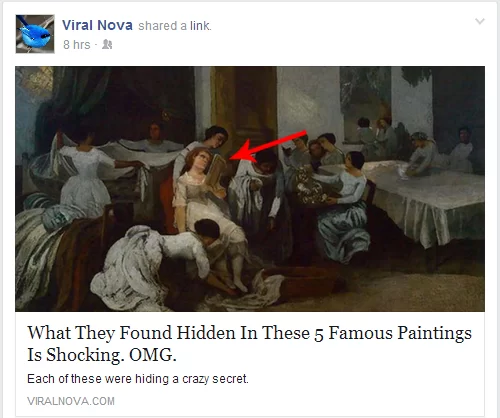Facebook is definitely serious about polishing the platform for high quality social media marketing content and user-relevant information. Just last week, the social network announced its decision to end like-gating as a way of cultivating deeper business-consumer engagement on Brand Pages. And in a more recent news straight from the Facebook press office, it was announced that clickbaiting would also be buried in the News Feed to make way for posts that are relevant to you and posted by people who matter to you.
 Clickbaits such as this. Clickbaits such as this. |
What is clickbaiting?
Clickbaits are links you see on your feed whose headlines don t provide much information about content, thus piquing your interest and compelling you to follow the link just to see what it s about. They re the teaser-type posts that sometimes come with a photo that only reveals half or a part of the subject.
Basically, if you see a link that says something along the lines of “What this couple did in this restaurant will make your jaw drop! Click here to find out,” it s a clickbait.
If you re an active Facebook user, you’ve definitely seen or even clicked on one of these at least once, but despite their prevalence, a survey conducted by the social network revealed that 80% of Facebook members prefer links that let them know upfront if they want to see the rest of the story. Seeing this, Facebook obliged by weeding out posts that may drown out more relevant content.
How does Facebook determine if a link is a clickbait?
Back then, Facebook s algorithm puts posts with a high click rate above your feed, thus depriving exposure from other posts that may be of higher relevance to you. This time, Facebook will now put into consideration the time people spend viewing the clicked link. If they dedicate a significant span of time on the page where they were redirected, then Facebook decides that the link is valuable. But if the user goes back to the News Feed without spending time on the page, then it s a sign that the link doesn’t contain something of much value.
Facebook will also factor in the engagement that a link garners. If it has a high clickthrough rate, but the people who clicked on it didn’t like, leave comments, or share it on their own timelines, then it suggests low-value content.
How will the update affect Brand Pages?
If you re fond of clickbaiting to generate visits to your site, then you will surely experience a decrease in distribution. As early as now, you should start rethinking your marketing and link-dissemination strategy so that Facebook can prioritize your posts.
One thing you should avoid is putting links within photo captions. If you compare link posts and photo posts on Facebook, you d see that links appear with a large photo and text about the story (title, author, meta description, or a line from the article). Photos, on the other hand, do come with captions, but they aren t necessarily about the accompanying link. With the link format showing more associated information, the social network would give higher priority to this, so choose your posting format wisely.


